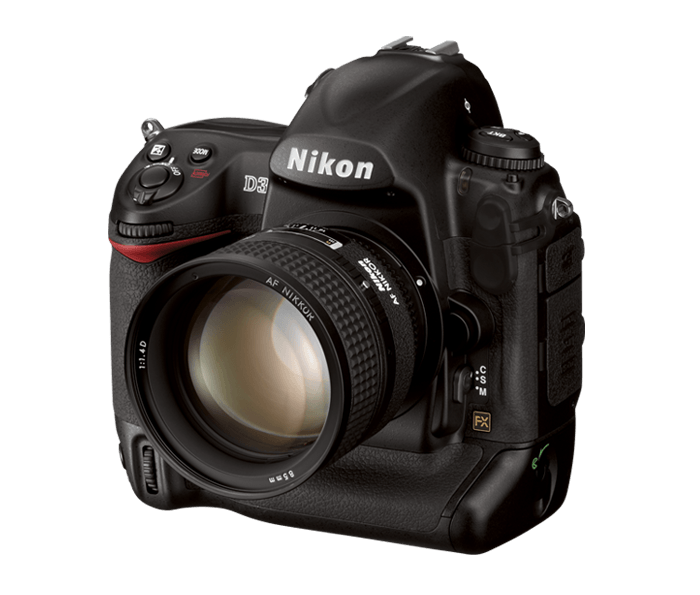Nikon D3 Specs and Scores

The Nikon D3 scores a 58 out of 100 in our evaluation. This DSLR camera, announced on August 23, 2007, and released the same year, came with a launch price of $4300. Measuring 160 x 157 x 88mm and weighing 1300g (2.87lbs), the camera’s specifications are now dated compared to current market offerings. Despite its age, the D3 still holds its ground for some photography enthusiasts who appreciate its design and performance.
Nikon D3 Overview and Optics
The optics of the Nikon D3 receive a score of 56/100. This camera features a 12.1-megapixel sensor, which is quite low compared to modern cameras. However, the D3 compensates with an impressive shooting speed of 11 frames per second. The full-frame CMOS sensor, coupled with the Expeed processor, results in a DXOMARK score of 81 for the sensor.
The Nikon F FX lens mount allows for a wide range of compatible lenses, providing flexibility for photographers. However, the camera lacks image stabilization, which may result in shaky images when shooting handheld. The aspect ratio is the standard 3:2, which is common among DSLRs.
Despite its lower megapixel count, the Nikon D3’s shooting speed and full-frame sensor make it a viable option for certain photography applications. While it may not be the top choice in today’s market, its compatibility with a variety of lenses and overall performance ensure that it remains a solid choice for those interested in a full-frame DSLR.
Nikon D3 Video Performance
Unlike most modern cameras, the Nikon D3 lacks video capabilities. However, it compensates with a built-in time-lapse function, enabling photographers to create stunning sequences with ease.
Nikon D3 Features and Benefits
The Nikon D3 scores 54 out of 100 in the features category. With a 3-inch screen size and a resolution of 922,000 dots, the display is average compared to other cameras on the market. However, the D3 does not include modern features such as a touchscreen, flip screen, GPS, WIFI, or Bluetooth capabilities.
While the Nikon D3 may not have the most advanced features, it still holds its own in certain aspects. The lack of a touchscreen and flip screen might not be ideal for some users, but others may appreciate the simplicity and focus on core functions. However, the absence of GPS, WIFI, and Bluetooth limits the camera’s connectivity and convenience for sharing and geotagging photos.
The Nikon D3’s features may not be the most competitive in today’s market, but it remains a solid option for those who prioritize simplicity and core functionality over advanced features.
Nikon D3 Storage and Battery
The Nikon D3 receives a storage and battery score of 87 out of 100. This camera provides two memory card slots, accepting Compact Flash (Type I or II) cards. In today’s market, the dual memory card slots are a valuable feature for photographers who require ample storage space and backup options.
The D3’s battery life is impressive, offering 4300 shots with its EN-EL4a battery type. This high-capacity battery ensures extended shooting sessions without the need for constant recharging. However, the camera lacks USB charging capabilities, which might be a drawback for some users.
The Nikon D3’s storage and battery specifications make it a reliable choice for professionals who demand longevity and flexibility in their equipment.
